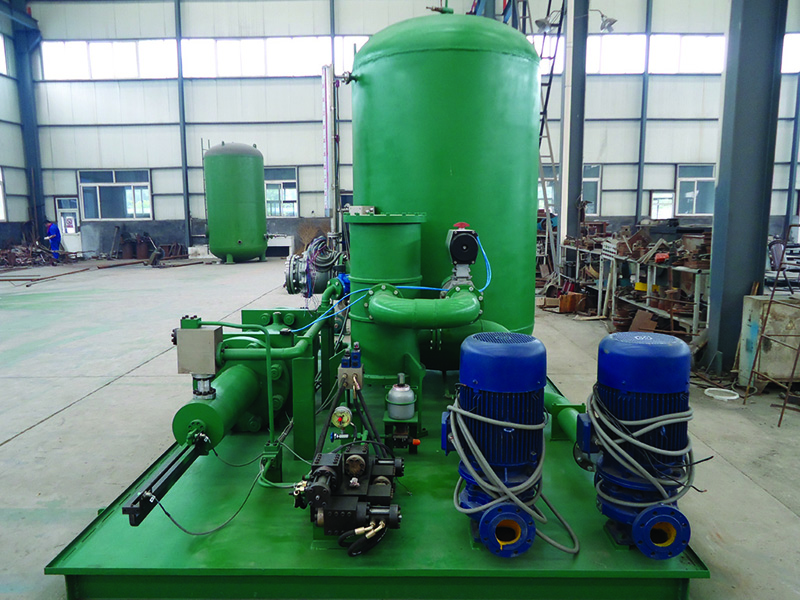Total station search
Hydraulic pressSteel tube hydrostatic testing machineSteel pipe hydraulic press
The hydraulic pressure testing machine equipment adopts a frame type four tension beam structure, a radial large gap seal form, an oil-water supercharger-type waterway design, a double V-shaped centering clamping mechanism, a double moving head design, and a head using a gate type Structure; test tubes of different diameters need only be replaced with seals and spacers and baffles in the head; industrial computer control, which can print test results in real time and manage and query historical data; the equipment has a reasonable structure and reliable performance ,high productivity.
The process is simple, the output is high, the cost is low, and the development is fast. The strength of spiral welded pipes is generally higher than that of straight seam welded pipes. Welded pipes with larger diameters can be produced from narrower billets. Welded pipes with different diameters can also be produced with billets of the same width. However, compared with the straight seam pipe of the same length, the weld length is increased by 30 ~ 100%, and the production speed is lower.
Large diameter or thicker welded pipes are generally made directly from steel blanks, while small welded pipes and thin-walled welded pipes need only be directly welded through steel strips. Then through a brief polishing, drawing can be done. Therefore, most of the smaller-diameter welded pipes use straight seam welding, and large-diameter welded pipes mostly use spiral welding.
Bearing steel production process
Bearing steel smelting of 50 tons UHP electric furnace → 60 tons of LF furnace refining → 60 tons of VD furnace vacuum treatment → alloy steel rectangular billet continuous casting (260mm × 300mm, 180mm × 220mm) → slow cooling or hot feeding → rolling material → finishing → inspection Warehouse.
Production process of galvanized pipe
(Galvanized pipe) Checking the black parts → hanging material → degreasing → rinsing → acid washing → cleaning → immersion plating aids → hot air drying → hot dip galvanizing → front and back blowing → cooling → passivation and rinsing → unloading Inspection, trimming → typing logo → packing, storage, transportation
Straight seam welded pipe forming process

The main production process of large-caliber self-seam-welded pipe is explained: large-caliber self-seam-welded pipe
1. Plate exploration: The steel plate used to make large-diameter submerged arc welded steel pipes enters the production line, and the whole plate is firstly subjected to ultrasonic inspection;
2. Milling: Double-sided milling of both sides of the steel plate by a milling machine to reach the required board width, parallelism of the board edges and the shape of the groove;
3. Pre-bending: use a pre-bending machine to pre-bend the board edge so that the board edge has the required curvature;
4. Forming: On the JCO forming machine, first half of the pre-bent steel plate is repeatedly pressed into a "J" shape through repeated step punching, and then the other half of the steel plate is equally zigzag and pressed into a "C" shape to form an open " O "shape
5. Pre-welding: The formed straight seam welded steel pipe is welded and gas maintenance welding (MAG) is selected for continuous welding;
6. Inner welding: Select multi-wire submerged arc welding (up to four wires) for welding inside the straight seam steel pipe;
7. Outer welding: choose multi-wire submerged arc welding on the outside of straight seam submerged arc welded steel pipe for welding;
8. Ultrasonic inspection Ⅰ: 100% inspection of the front and back welds of the straight seam welded steel pipe and the base metal on both sides of the weld;
9. X-ray inspection Ⅰ: 100% X-ray industrial television inspection of the welds on the surface and the surface, using an image processing system to ensure the sensitivity of flaw detection;
10. Expansion: expand the diameter of the submerged arc welded straight seam steel pipe to improve the dimensional accuracy of the steel pipe and improve the distribution of the internal stress of the steel pipe;
11. A hydraulic test : In the hydraulic test machine after the pipe-by-diameter steel pipe reaches the root check to ensure that the test pressure specifications, it has a function to record and store active;
12. Chamfer: Pipe end processing of the qualified steel pipe to the required pipe end bevel size;
13. Ultrasonic inspection Ⅱ: Perform ultrasonic inspection one by one to check the shortcomings of the straight seam welded steel pipe which may occur after diameter expansion and water pressure;
14. X-ray inspection Ⅱ: X-ray industrial television inspection and tube-end welding seam filming of the steel pipe after the diameter expansion and hydraulic pressure experiments;
15. Tube end magnetic particle inspection: Perform this check to find tube end defects;
16. Anti-corrosion and coating: The qualified steel pipe is anti-corrosion and coated according to user requirements.